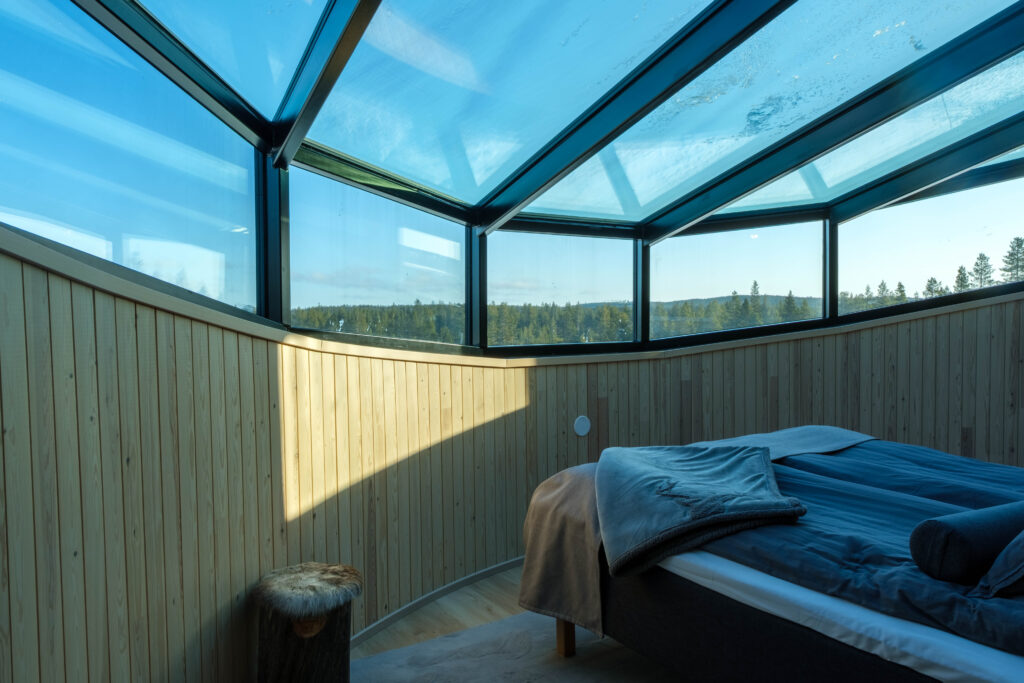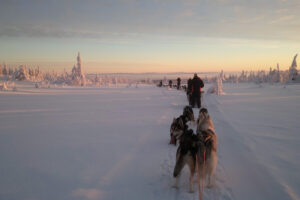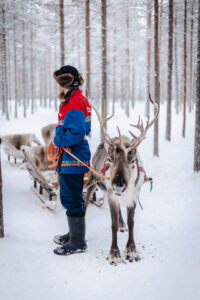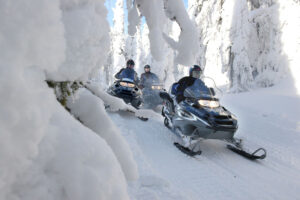The best way to travel to Lapland depends on where you’re starting from and what you’re looking for in your Arctic adventure. Most international visitors fly into one of Lapland’s main airports (Rovaniemi, Kittilä, or Ivalo) via Helsinki, which offers the quickest route to Finnish Lapland. Domestic travellers might also consider the scenic overnight train from Helsinki or driving through stunning northern landscapes. Each option has distinct advantages for different travel styles and budgets.
What are the main transportation options for getting to Lapland?
Flying is the most efficient way to reach Finnish Lapland, with three major airports serving the region. Rovaniemi Airport is the largest and most accessible, offering direct international flights during winter and year-round connections through Helsinki. Kittilä Airport serves the western Lapland resorts and is approximately two hours from destinations like Posio, whilst Ivalo Airport in the far north provides access to the northernmost wilderness areas.
International travellers typically connect through Helsinki, where Finnair and other carriers offer multiple daily flights to Lapland. Flight times from Helsinki are remarkably short—just over an hour to Rovaniemi—making this the fastest option for reaching Arctic Finland. During peak winter season (December through March), you’ll find more direct international flights from major European cities, particularly to Rovaniemi.
The overnight train from Helsinki to Rovaniemi offers a romantic alternative for those who enjoy scenic travel. The journey takes approximately 12 hours, and sleeping compartments make it a comfortable option whilst saving a night’s accommodation. The train travels through Finland’s beautiful forests and crosses the Arctic Circle during the night, delivering you to Lapland refreshed and ready for adventure.
Driving to Lapland gives you complete flexibility and allows you to explore at your own pace. The journey from Helsinki to Rovaniemi covers roughly 830 kilometres and takes about ten hours. Winter driving requires proper preparation—snow tyres are mandatory from November through March, and you’ll want experience with winter road conditions. However, the route showcases Finland’s stunning landscapes and allows spontaneous stops at charming towns along the way.
How do you get from the airport to your accommodation in Lapland?
Once you’ve arrived at your Lapland airport, several transportation options connect you to your final destination. Pre-arranged transfers through your accommodation provider offer the smoothest experience, particularly for remote locations. Many Lapland retreats, including wilderness destinations around Lake Livo in Posio, include airport transfers as part of their packages or can arrange them when you book.
We recommend booking your transfer well in advance, especially during peak season when availability becomes limited. When you arrange transportation through us, we coordinate your pickup time based on your flight arrival, ensuring someone is waiting even if your flight is delayed. The journey from Kittilä Airport to Lake Livo takes approximately two hours through beautiful Lapland scenery, giving you time to transition into the peaceful Arctic atmosphere.
Rental cars provide independence and are readily available at all major Lapland airports. This option works brilliantly if you plan to explore multiple destinations or prefer complete flexibility in your schedule. Winter rentals come equipped with proper snow tyres, and most agencies provide brief orientations about winter driving conditions. GPS navigation is reliable throughout Lapland, though mobile signal can be intermittent in remote wilderness areas.
Taxis and shuttle services operate from all airports, though costs can be substantial for longer distances to remote accommodations. Shared shuttle services offer more economical options for popular resort destinations, but these typically don’t serve wilderness locations. For destinations like Posio, private transfers or rental cars are your most practical choices.
Whatever transportation method you choose, allow extra time during winter months. Weather conditions can affect travel times, and it’s better to arrive relaxed than rushed. Your accommodation provider can offer specific guidance about local road conditions and realistic journey times for your travel dates.
When is the best time to travel to Lapland for different experiences?
Your ideal time to travel to Lapland depends entirely on which Arctic experiences you’re seeking. Northern Lights enthusiasts should plan visits between September and March, when dark nights provide optimal viewing conditions. The peak aurora season runs from December through February, offering the longest hours of darkness and, statistically, the most frequent sightings. Our glass igloo accommodation provides perfect Northern Lights viewing from the comfort of your bed during these magical months.
December through March represents peak winter season, when Lapland transforms into a snowy wonderland perfect for traditional Arctic activities. This period offers the full range of winter experiences—husky sledding, snowmobile adventures, reindeer rides, and proper snow conditions for all winter sports. Temperatures are cold (often -10°C to -25°C), but the landscape is breathtaking and activities are at their best. This is also when flight options are most abundant and accommodation providers offer their complete range of services.
The midnight sun season from June through July provides a completely different Lapland experience. Continuous daylight creates surreal conditions for hiking, fishing, and exploring the wilderness. Temperatures are mild (15°C to 25°C), and you’ll encounter far fewer tourists than during winter months. This season suits travellers seeking active outdoor adventures without the cold, though you’ll miss the Northern Lights and snow-based activities.
Shoulder seasons (April-May and September-October) offer unique advantages for flexible travellers. September brings autumn colours and the start of aurora season with milder temperatures. Spring months feature longer daylight hours, reasonable snow conditions for winter activities, and typically lower prices. These periods are ideal if you’re seeking a quieter Lapland travel experience whilst still accessing seasonal activities.
Your travel timing also affects practical considerations like flight availability and pricing. Winter peak season (Christmas through February) sees higher accommodation rates and requires earlier booking, particularly for unique stays like glass igloos. Summer and shoulder seasons offer more availability and often better value, though some winter-specific accommodation and activities aren’t available. When planning your Lapland travel, consider booking flights and accommodation several months ahead for winter visits, whilst summer trips can be arranged with shorter lead times.
